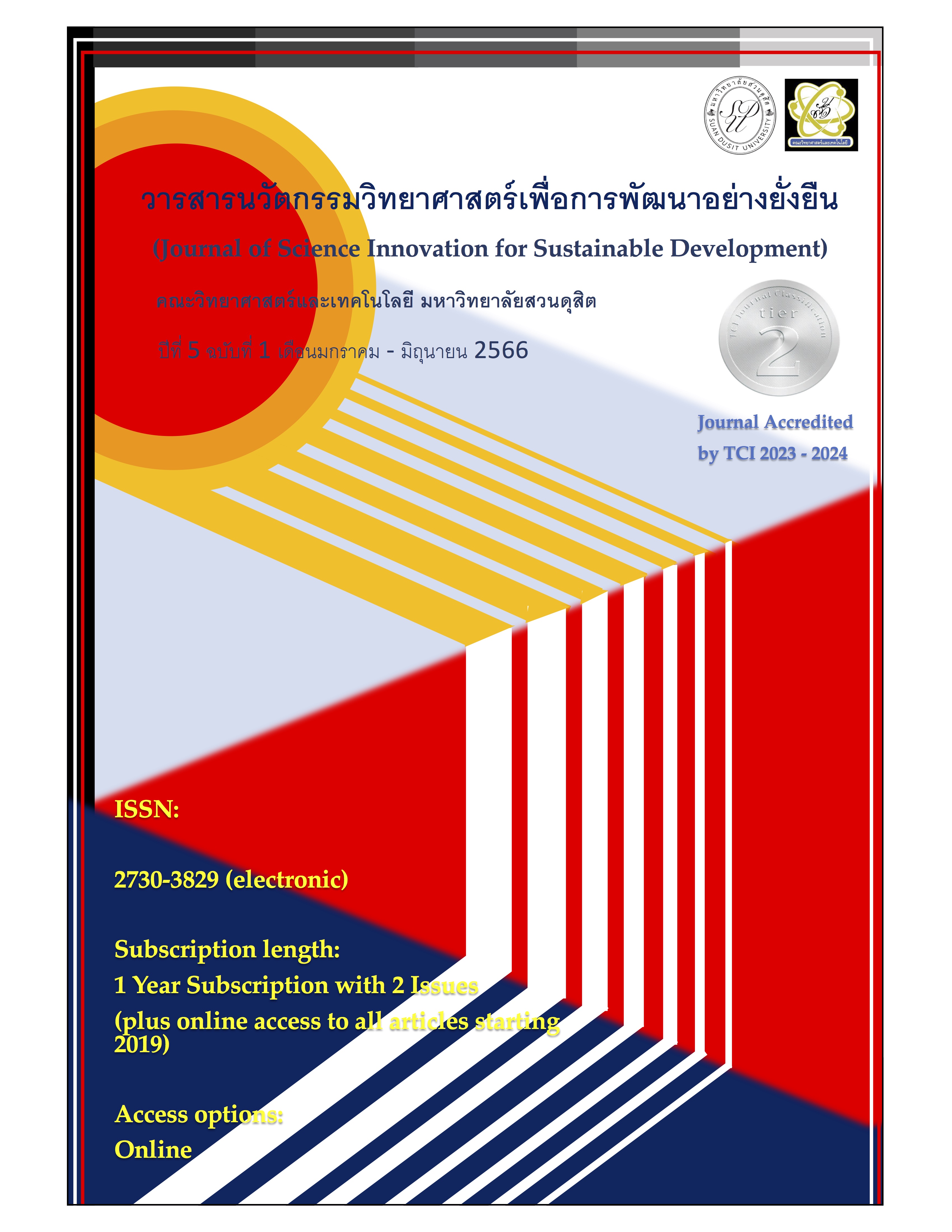A Model for Screening Patients with Kidney Stones using Image Classification Techniques
Main Article Content
Abstract
The research aims to create a model for screening patients with kidney stones in the kidney, using images of patients diagnosed. A total of 6,454 images were collected from various hospitals in the city of Thakarpa, Bangladesh. The data was analyzed using the cross industry standard process for data mining (CRISP-DM), using the 4 techniques of image classification: Support Vector Machines, k-Nearest Neighbors, Naive Bayes and Random Forest. To test the performance of Image classification using Accuracy, Sensitivity, Specificity, and F-measure. The research found that the K-NN nearest neighbor is the most suitable for building a model to screen kidney stones effectively and efficiently in patients.
Article Details

This work is licensed under a Creative Commons Attribution-NonCommercial-NoDerivatives 4.0 International License.
ลิขสิทธิ์ต้นฉบับที่ได้รับการตีพิมพ์ในวารสารนวัตกรรมวิทยาศาสตร์เพื่อการพัฒนาอย่างยั่งยืนถือเป็นกรรมสิทธิ์ของคณะวิทยาศาสตร์และเทคโนโลยี มหาวิทยาลัยสวนดุสิต ห้ามผู้ใดนำข้อความทั้งหมดหรือบางส่วนไปพิมพ์ซ้ำ เว้นแต่จะได้รับอนุญาตอย่างเป็นลายลักษณ์อักษรจากคณะวิทยาศาสตร์และเทคโนโลยี มหาวิทยาลัยสวนดุสิต นอกจากนี้ เนื้อหาที่ปรากฎในบทความเป็นความรับผิดชอบของผู้เขียน ทั้งนี้ไม่รวมความผิดพลาดอันเกิดจากเทคนิคการพิมพ์
References
Laongkum, A., and Kumeechai, P. (2020). Implementation of classification system for Buddha amulet using GLCM and Wavelet Transform and using Neural Network for classify. Royal Thai Naval Academy Journal of Science and Technology, 3(1), 9-20. [In Thai].
Sukprasert, A. (2021). Data Mining with RapidMiner Studio. Mahasarakham University. Mahasarakham Business School. [In Thai].
Promkasikorn, L. (2015). The factors predicting the health behaviors related to the occurrence of kidney stone formation among kidney stone disease patients. (Master’s thesis). Thammasat University, Faculty of Nursing, Department of Adult Nursing and the Aged. [In Thai].
MD. Mehedi, K, H. (2022). CT kidney dataset: normal-cyst-tumor and stone. Retrieved from https://www.kaggle.com/datasets/nazmul0087/ct-kidney-dataset-normal-cyst-tumor-and-stone.
Nonsiri, N., Chaichitwanidchakol, P., and Somkantha, K. (2022). Data classification for diabetes risk diagnosis using majority voting ensemble method and forward feature selection method. Udon Thani Rajabhat University Journal of Sciences and Technology, 10(2), 107–122. [In Thai].
Qadri, S. (2021). Role of machine vision for identification of kidney stones using multi features analysis. Lahore Garrison University Research Journal of Computer Science and Information Technology, 5(3), 1-14.
Verma, J., Nath, M., Tripathi, P. & Saini, K. K. (2017). Analysis and identification of kidney stone using Kth Nearest Neighbour (KNN) and Support Vector Machine (SVM) classification techniques. Pattern Recognition and Image Analysis, 27, 574-580.
Pakkasung, Y., Methakanjanasak, N., and Theeranut, A. (2019). Illness perception of patient with recurrent renal stone and chronic kidney disease. Journal of Nursing and Health Care, 37(1), 249-257. [In Thai].


